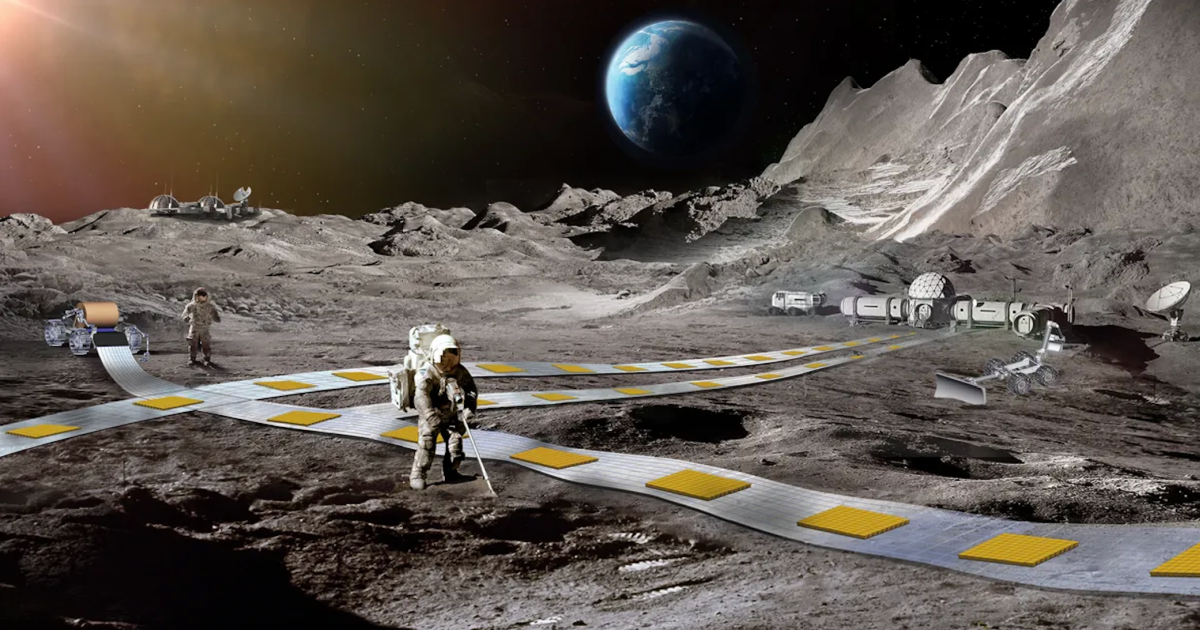
We take for granted that we can go to the Moon – after all, we’ve been there before, right?
The truth is that it’s been quite a while since human beings have set foot on the lunar surface, and so achieving a permanent human presence there would still be a(nother) giant step forward.
The idea is to build a levitating railway system called FLOAT – Flexible Levitation On A Track, and the goal is to provide “payload transportation that is autonomous, reliable, and efficient.”
It would exist to move payloads to and from spacecraft landing zones to a base and back, and to transport lunar soil from mining locations to where it is needed for resource extraction or construction.
Researchers are most excited about the tracks, which would not be fixed. They would be unrolled onto lunar soil to avoid the need for lengthy site preparation. It would be made of a graphite layer, which allows for diamagnetic levitation, and a flex circuit to generate electromagnetic thrust.The last layer would be a solar panel to help absorb sunlight and save energy when possible.
Levitating robots will move over the tracks, able to avoid being damaged by sharp bits of soil. Researchers claim they will be able to move 100 tons of material a day.
FLOAT is one of the six NASA Innovative Advanced Concepts (NIAC) that has entered phase II. Others include a new propulsion system that could quickly move astronauts to Mars and a liquid space telescope.
Phase II for FLOAT will delve into designing and manufacturing a scaled-down version of the levitating railway to be tested on Earth, and a deep dive into the environmental impact of the robots and the tracks.
NIAC program executive John Nelson feels confident this isn’t just a science fiction concept.
“These diverse, science-fiction-like concepts represent a fantastic class of Phase II studies. Our NIAC fellows never cease to amaze and inspire, and this class definitely gives NASA a lot to think about in terms of what’s possible in the future.”
The project leader on FLOAT is Ethan Schaler, who works at NASA’s Jet Propulsion Laboratory. He’s got around $600,000 to work with and a timeline that could put it on the moon as soon as the next decade.
I’m definitely excited to see what happens in space in the next 10 years.
I’m pretty sure it’s going to give us that 1960s feeling all over again.
If you thought that was interesting, you might like to read about 50 amazing finds on Google Earth.